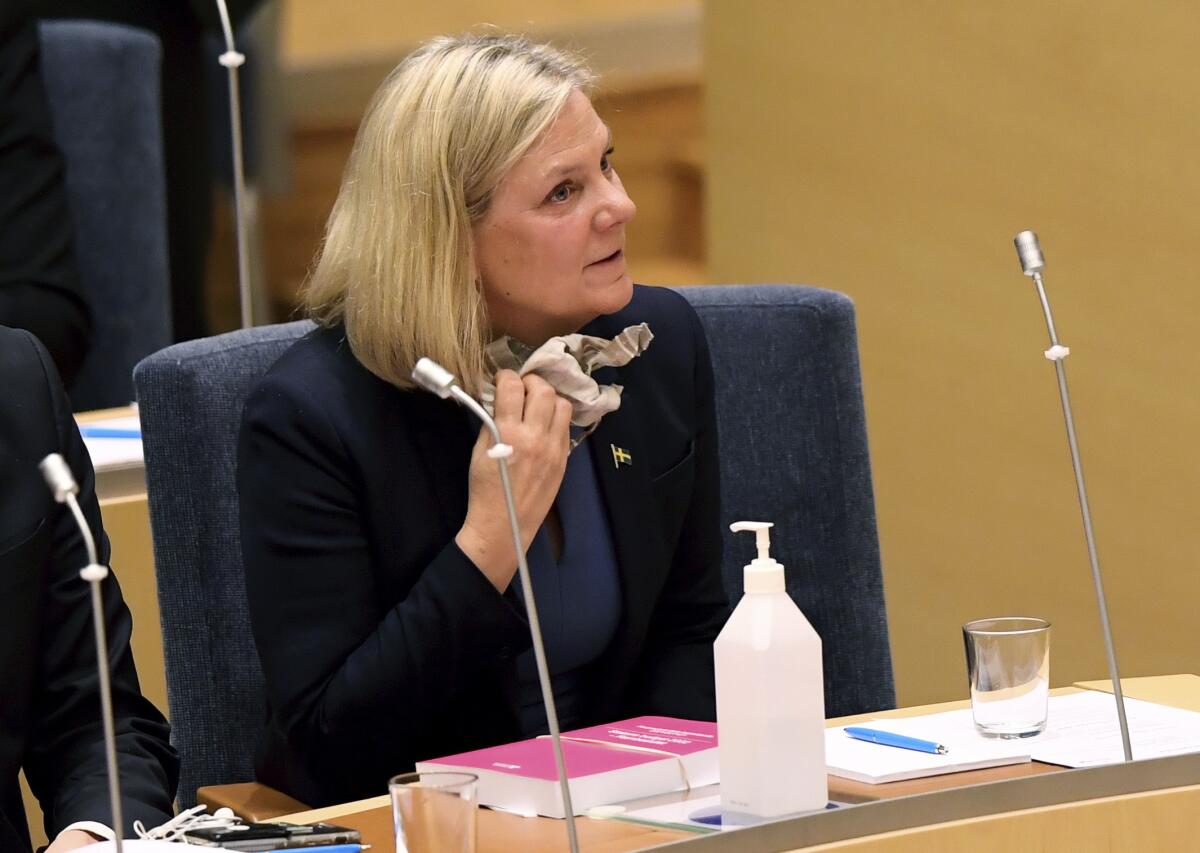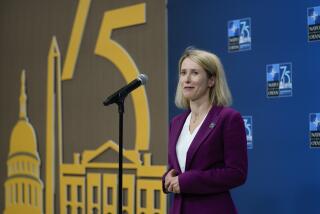Sweden elects its first female prime minister — for the second time

- Share via
COPENHAGEN — Magdalena Andersson, who last week was Sweden’s first female prime minister for a few hours before resigning because a budget defeat made a coalition partner quit, was elected once again Monday as the Nordic nation’s head of government.
In a 173-101 vote with 75 abstentions, the 349-seat Riksdag elected Andersson, leader of the Social Democrats, as prime minister. She will form a single-party minority government rather than head a majority coalition. Her Cabinet is expected to be named Tuesday. Formally, she will be installed following an audience with King Carl XVI Gustav, Sweden’s figurehead monarch.
Andersson served as prime minister for seven hours before stepping down last week after the Greens quit their two-party coalition. The Greens’ move followed the rejection of Andersson’s budget proposal in favor of one presented by opposition parties, including the right-wing populist Sweden Democrats, a party rooted in a neo-Nazi movement.
Under the Swedish Constitution, prime ministers can be named and govern as long as a parliamentary majority — a minimum of 175 lawmakers — is not against them.
“It feels good and I am eager to start,” Andersson said of her appointment.
Andersson who was finance minister before becoming prime minister, said she would present her government’s policies Tuesday when her Cabinet is named. However, she said she had three priorities: welfare, climate change and combating violence. Sweden has seen a rise in organized criminal activity in the last few years, and several gang-related shootings have occurred in the three main cities — Stockholm, Goteborg and Malmo.
Imagine an egalitarian society that treats women and men with equal respect, where both sexes are afforded the same opportunities, and the economy is strong.
Andersson said she would govern Sweden using the opposition’s budget blueprint, which was based on her own failed proposal but which re-distributes about $2.2 billion of the $8.2 billion that she had wanted to spend on various reforms. The new budget plan aims to reduce taxes, increase salaries for police officers and allot more money to different parts of Sweden’s judiciary system.
In a speech to parliament, Center Party leader Annie Loof said a female prime minister “means a lot to many girls and women, to see this glass roof shattered. I am proud that [the Center Party] is involved and makes this possible.” Her party abstained from voting for or against Andersson, paving the way for her election.
Andersson’s appointment as prime minister had marked a milestone for Sweden, viewed for decades as one of Europe’s most progressive countries when it comes to gender relations, but which had yet to have a woman in the top political post.
The right wing of the Riksdag is divided. Ulf Kristersson, head of the opposition Moderate party — Sweden’s second-largest — repeatedly has said that a center-right government is not feasible because no mainstream party wants to cooperate with the third-largest party, the right-wing Sweden Democrats.
Andersson’s predecessor as prime minister, Stefan Lofven, is still leading the Swedish government in a caretaking capacity until a new government is formed.
Sweden’s next general election is scheduled for Sept. 11.
More to Read
Sign up for Essential California
The most important California stories and recommendations in your inbox every morning.
You may occasionally receive promotional content from the Los Angeles Times.











